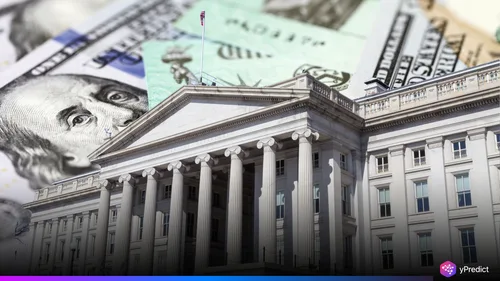
Global investors have favored US Treasuries for safety for a while, particularly in times of economic uncertainty. Long-duration bonds had historically offered some semblance of protection, and even some level of return, when markets were unsettled. But the landscape is changing quickly. With monetary policy more dovish, the long-duration treasuries may provide something less than the protection they previously offered.
This week, long-dated US Treasuries experienced some modest losses, which has reignited fervent discussions among asset managers and economists. In the assessment of Altaf Kassam, Head of Investment Strategy and Research for EMEA at State Street Global Advisors, the market needs to get ready to live in a new world and adjust to move away from the safe-haven benefits of long-duration bonds during a lowering of hierarchy of the central banks.
Why the Bond Market Is Losing Its Shine
The attraction of long-duration bonds always depended on the same key element: hedging against economic shocks. Historically, when equities tripped, Treasuries bounced to help investors find balance. However, when central banks become dovish, yields collapse and the dynamic changes. At the margins, rather than moving higher when risk rises, bonds now feel pressure from lower interest rate expectations.
Investors are beginning to realize that what was once a solid hedge may not exhibit the same characteristics today. The small losses for the week further illustrate how changes in monetary policy can lessen the effectiveness of long-duration bonds as stabilization.
Monetary Policy and Its Impact on Investors
Central banks around the world are currently increasingly more supportive of growth than restrictive in terms of financial conditions. This shift in monetary policy means lower rates for longer durations therefore making the risk of long-duration Treasuries as a viable source of meaningful return difficult. While shorter-duration securities or diversified credit products may have proven resilient, long-term bonds appear to no longer be a prudent sole risk-free source of asset allocation.
Kassam’s comments emphasized an important reality – investors need to rethink their views on risk and protection, since the playbook of bonds as reliable offset to equity volatility is no longer so assured.
Safe-Haven Assets Under Pressure
In history, markets could count on safe-haven assets such as gold, the US dollar, and long-term government bonds, to comfort them in crisis. Now, the monetary situation is changing that. According to an economist, policy driven losses, are showing bonds not only the safety they were always held in. Portfolio managers are asking key questions such as what to rely on instead? Some are suggesting diversification into commodities, alternative assets, or even defensive equities. The traditional stocks versus bonds binary is either not applying in its past form.
Rethinking Investment Strategies
People that are relying significantly on long-duration bonds must reevaluate their asset allocations. As profligate central banks growing balance sheets and low-interest rates take away the yield cushion that bonds provided, bonds will lose their value as hedging instruments, and as higher loss exposure on unexpected turns in the market. Investors need wider latitude in times like this. It may mean diversification and strength with a mix of safe-haven assets, inflation-protected securities, or diversifying globally in fixed income. The point is, don’t rely on a single instrument for safety – spread your risk wisely.
The Road Ahead for Bonds
Long-term Treasuries may not be going away from your portfolios, but their role as the foundation of safety is starting to be questioned. In the past, unless investors had inflation concerns, Treasuries made sense as a stable income source. Investors now have to balance the need for income with realizing that changing monetary policy can certainly change the game.
This moment serves as a good reminder, that what works today, may not work tomorrow. Being vigilant as to central bank actions and market signal will separated the winners in the new games.







